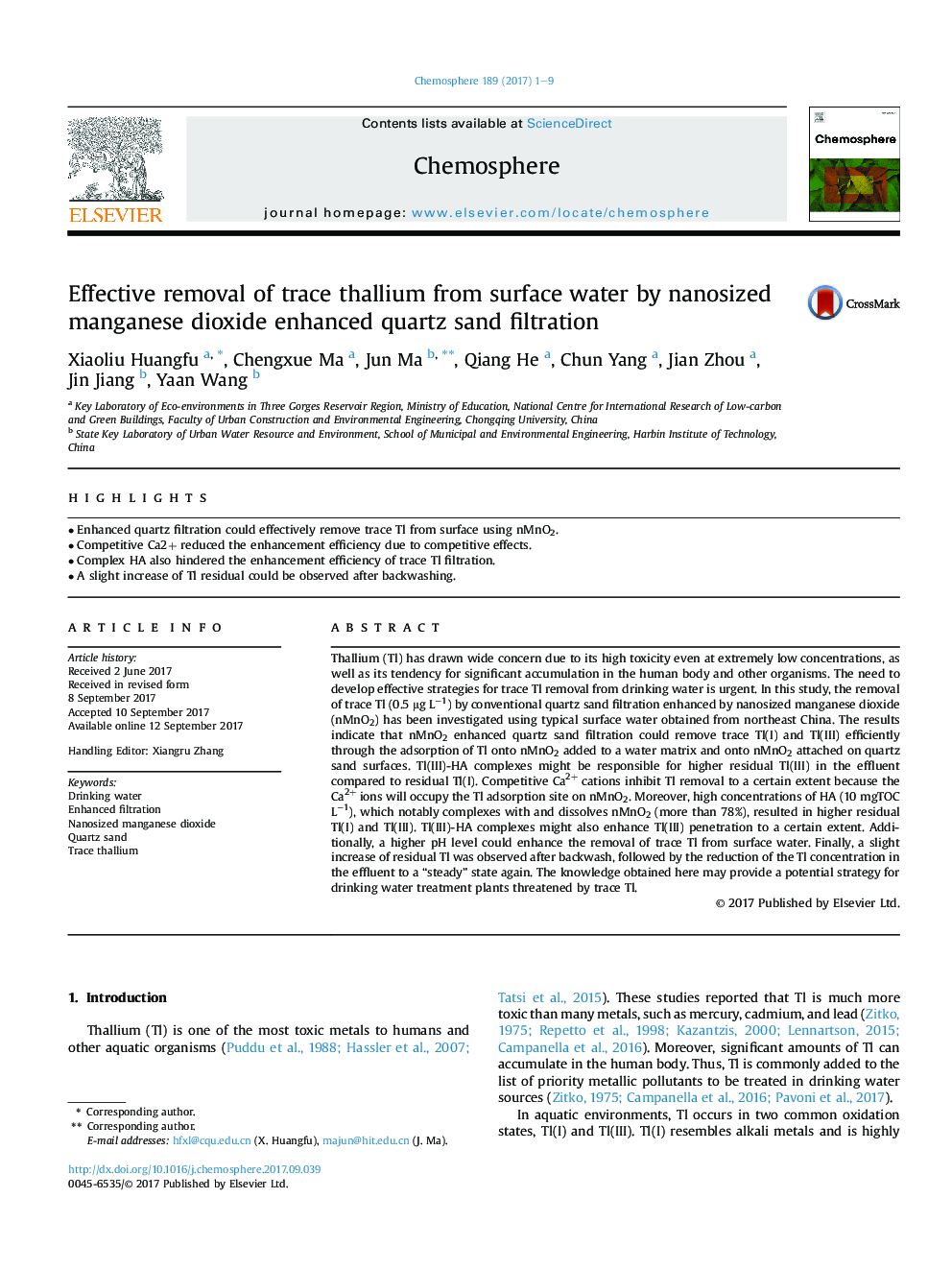| کد مقاله | کد نشریه | سال انتشار | مقاله انگلیسی | نسخه تمام متن |
|---|---|---|---|---|
| 5745903 | 1618782 | 2017 | 9 صفحه PDF | دانلود رایگان |
- Enhanced quartz filtration could effectively remove trace Tl from surface using nMnO2.
- Competitive Ca2+ reduced the enhancement efficiency due to competitive effects.
- Complex HA also hindered the enhancement efficiency of trace Tl filtration.
- A slight increase of Tl residual could be observed after backwashing.
Thallium (Tl) has drawn wide concern due to its high toxicity even at extremely low concentrations, as well as its tendency for significant accumulation in the human body and other organisms. The need to develop effective strategies for trace Tl removal from drinking water is urgent. In this study, the removal of trace Tl (0.5 μg Lâ1) by conventional quartz sand filtration enhanced by nanosized manganese dioxide (nMnO2) has been investigated using typical surface water obtained from northeast China. The results indicate that nMnO2 enhanced quartz sand filtration could remove trace Tl(I) and Tl(III) efficiently through the adsorption of Tl onto nMnO2 added to a water matrix and onto nMnO2 attached on quartz sand surfaces. Tl(III)-HA complexes might be responsible for higher residual Tl(III) in the effluent compared to residual Tl(I). Competitive Ca2+ cations inhibit Tl removal to a certain extent because the Ca2+ ions will occupy the Tl adsorption site on nMnO2. Moreover, high concentrations of HA (10 mgTOC Lâ1), which notably complexes with and dissolves nMnO2 (more than 78%), resulted in higher residual Tl(I) and Tl(III). Tl(III)-HA complexes might also enhance Tl(III) penetration to a certain extent. Additionally, a higher pH level could enhance the removal of trace Tl from surface water. Finally, a slight increase of residual Tl was observed after backwash, followed by the reduction of the Tl concentration in the effluent to a “steady” state again. The knowledge obtained here may provide a potential strategy for drinking water treatment plants threatened by trace Tl.
Journal: Chemosphere - Volume 189, December 2017, Pages 1-9
